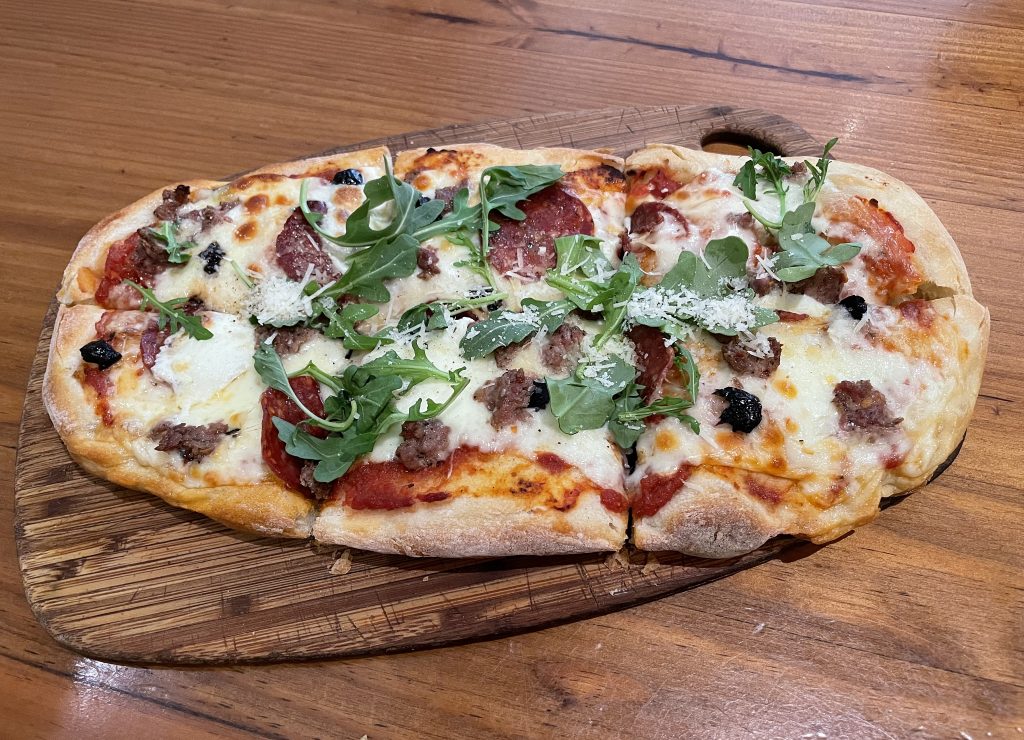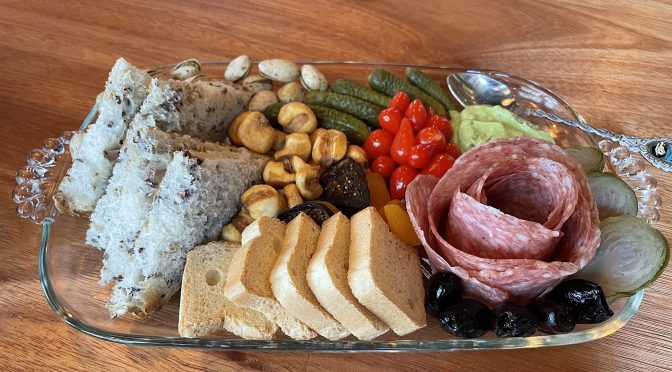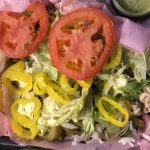By Robin Garr
LouisvilleHotBytes.com
Here’s an existential question about the art of the food critic: Should a restaurant review stick to the simple basics of food, mood, and service? Or does a review gain texture and meaning by bringing in a broader range of history, culture, culinary arts and other trips down fascinating rabbit holes?
If you follow my food writing at all, you won’t have much trouble finding me sitting unobtrusively at a dinner table behind Door No. Two. I love those culinary rabbit holes, and I suspect it shows.
Now, don’t get me wrong: A restaurant critic is not doing their job if they don’t inform you, faithful reader, about the food and adjacent matters that may influence your visit: Menu selection and prices, service, and those overall comfort issues like the furniture, mood, decor, and don’t forget noise and ease (or not) of conversation, along with matters of access that affect not only wheelchair users but anyone who doesn’t easily get around. Oh, yeah, how much your dinner cost, how much did you tip – critics should set a good example – and, at least implicitly, if it was all worth it.
Those are the basics, and any critic or reviewer or influencer worth their salt and pepper must give you those, clearly and specifically expressed.
But should the review stop there? Many do, and frankly, that’s all you need to get a sense of whether the eatery under the microscope seems right for you. But in my opinion, that’s just the start.
Again, you may not be surprised to hear me say this. I’m the guy who’s known for starting my review with a joke, a literary reference, a bit of history, or a deep dive into the background of a cuisine or a specific dish featured in the review.
It is neither with shame nor with pride that I point to last week’s review, in which I spent the first 300 words of a 900-word column on a dissertation about chaat, the crunchy, tangy, fruity, hot, and sweet Indian street food that some (well, me) liken to Indian nachos.
Did the first part of the column tell people anything about Shreeji Indian Vegetarian Street Food, the nominal object of my review? Well, no. But I hope it got people engage with, and informed about, a fascinating side alley (or rabbit hole) of Indian cuisine. And segued right into the rest of my review, in which I hope I marked off all the boxes that readers need to learn about an eatery and, perhaps, decide if a meal there is for them.
It’s always good to do a reality check on one’s own issues, so I took to Facebook to ask how my friends – many of whom presumably also read my reviews – felt about this issue. If I’m doing it wrong, I figured my friends wouldn’t be shy about telling me.
Happily, though, at least 90% of some two dozen responses spoke in favor of my approach.
“Definitely first priority service, then food, then mood,” wrote my friend Scott. “But yes,I love the history and squishy stuff too, that’s what will get me there sooner rather than eventually, assuming service and food past muster.”
“Just write what’s interesting, like you always do,” another friend added, prompting my response with a “hug” emoji.
And, most reassuring of all, LEO Editor Erica Codey-Rucker said, right out in public, “I love a bit of history so I know the reviewer has knowledge of the lineage of the food and I love to know the vibe of the place, cost and satisfaction of the meal. … But you always basically cover that.”
Thanks, Erica!
The art of the restaurant review really comes down to this, in my opinion, and I’m glad a lot of you agree: The food, atmosphere, and service are certainly key, and leaving any of that out yields a failed review.

But providing a wider range of information that considers both the immediate and broader aspects of the dining experience can provide a more comprehensive and insightful perspective. And, I hope, a more engaging read.
I try to do this in virtually every review. I enjoyed digging up the details, for example, of the game of restaurant-business musical chairs that led Goose Creek Diner into the former home of Sal’s Pizza Pub and yielded a new eatery, The Goose, that channeled a little of both.
Along with reporting on the tasty comfort-food fare at the reopened Uptown Cafe, for another, I felt it important to spend a little time on the restaurant’s family tree and how a long-time regular at the old Uptown decided to keep the restaurant alive after its former owner closed it.
And it would have been hard to talk about the newish Harvey’s on Frankfort Avenue without devoting a few words to explaining what charcuterie is and highlighting the news that the National Restaurant Association recently declared charcuterie boards a “Top 3 hot menu trend” and No. 1 in appetizers. (A small Harvey’s charcuterie plate is pictured at the top of this page.)
Do small things matter? I think they do. On your plate and in the details of your service and the comfort of your surroundings. And not least in the review that informs you about a place you might soon wish to try.




